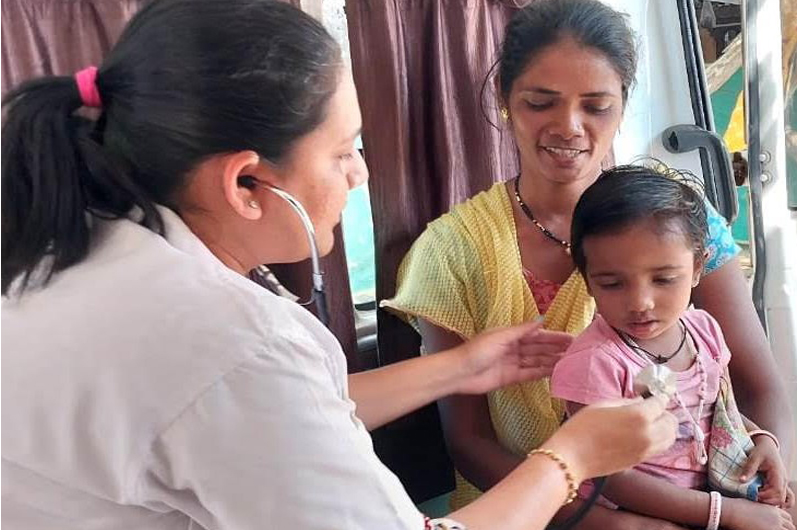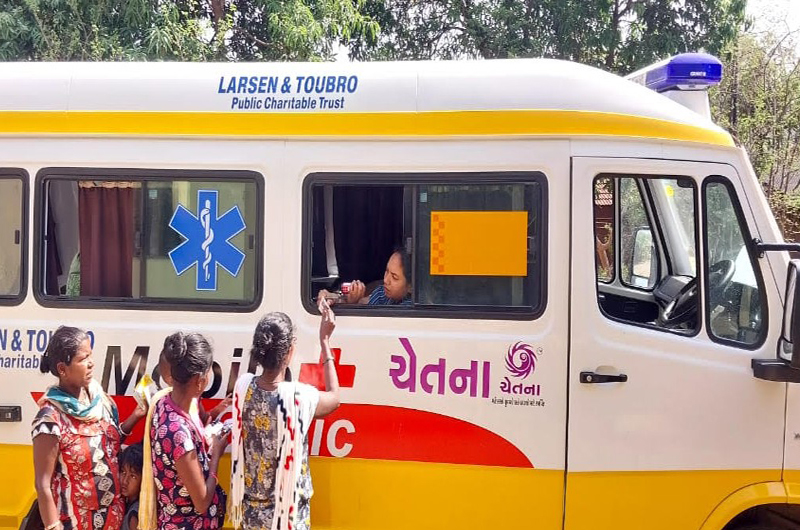CHETNA (Centre for Health Education Training and Nutrition Awareness) based in Ahmedabad is one of India’s pioneering as well as leading NGOs working on women and girl’s empowerment, health and nutrition issues. On turning 40 last August, it showed to the world through a coffee table book, CHETNA@40 – Nurturing Dreams, Empowering Destinies, its struggles and achievements and the ongoing impact of its work. CHETNA was set up by three young women fresh out of college, two as nutritionists and one eager to work as a child educator – Indu Capoor, Pallavi Patel and Minaxi Shukla – and was an endeavour of the Nehru Foundation for Development. For the three women, it was ground-breaking work from the grassroots. Usha Rai narrates three of the stories featured in the book that won CHETNA kudos. Here is the third story
Dr Roopal Thakorbhai Patel, 31, is a tribal and an ayurvedic doctor from Vansda Block of Navsari District in Gujarat. In 2022, soon after the COVID pandemic, she started operating a mobile health ambulance to 12 villages which had no health facilities like a primary health centre (PHC) or a sub-centre. The nearest was 10 to 15 km from these villages. The 17,000 population in the 12 villages were dependent on traditional healers.
Dr Patel, who knows the tribal dialects, works with CHETNA to bring modern health care to villages where there are no doctors. The ambulance visits these villages once a week, covering two villages in a day, she says. Though it is large enough to do the examination in it, the health team of five are happy to work in the facility provided by the sarpanches or heads of the 12 villages. It enhanced the community’s confidence in them at a time when the fear of COVID kept people indoors.

dialects and works with CHETNA to bring modern health care to villages in Navsari District where there are no doctors.
“There were problems of skin infection and sickle cell anaemia in the villages but people would go to traditional healers or just pick up medicines from the medical stores. We had to be patient till they began trusting us,” says Dr Patel. The first patient to the clinic was a 90-year-old woman from Vati Village who trudged in using a walking stick. She was treated with multivitamins for two months. Then one fine day, she walked in beaming sans her walking stick.
Thereafter, the village’s confidence in the white ambulance and its team soared. In Sadad Devi Village, a mother walked with her five-year-old son burning with fever. While examining the child, Dr Patel found a big cyst on his head and insisted the mother take him to the nearest big hospital and get the cyst removed. The mother took the advice and the child returned healthy and happy. The confidence in the mobile health service grew.
There are several cases of sickle cell anaemia, a hereditary disease in the region, but young people don’t want to come for treatment because they are afraid that if the community gets to know about it, they would find it difficult to find a life partner. When Dr Patel suspects patients are anaemic, she asks them to bring the card given to them by the ASHA (accredited social health activist) at the PHC to confirm they have sickle cell anaemia and then counsels them to take a folic acid tablet every day. She also gives medicines and assures them that she will not reveal their disease to others.

Dr Patel says because of the high prevalence of the disease in the region, every PHC has a sickle cell anaemia counsellor but many villagers do not believe in modern medicines and, though advised and given medicines at the PHC, they do not take them. Those coming with a persistent cough are sent to the PHC for a sputum test to rule out tuberculosis.
The outbreak of a conjunctivitis epidemic across the 12 villages was a challenge for Dr Patel and her team. For two months, the ambulance buzzed up and down providing care to 159 persons at their doorstep and running a campaign to contain the spread of the infection. More people were seen wearing dark glasses and avoiding crowded spaces. The campaign added to the clout of the mobile health service and the care givers.
Today, the attendance at the health clinic is 40 to 42 patients a day. Most of them are senior citizens because the younger people have migrated for work. The medicines are free and this is also a big incentive to keep them away from traditional healers. Now, people from other villages (not just the 12 for which the programme was started), too, are coming for medicines to the mobile clinic. People who are too old to walk to the clinic can collect 15 days medicines at a time and sometimes the health attendants deliver the medicines at their homes.
(The writer is a veteran journalist who brought in social issues including women’s issues, environment, education, health and rural development into mainstream media. For four decades, she worked for The Times of India, Indian Express and Hindustan Times, from Delhi, and for a while also worked for the Press Institute of India. She has been associated with CHETNA for many years now.)



 from Webdoux
from Webdoux